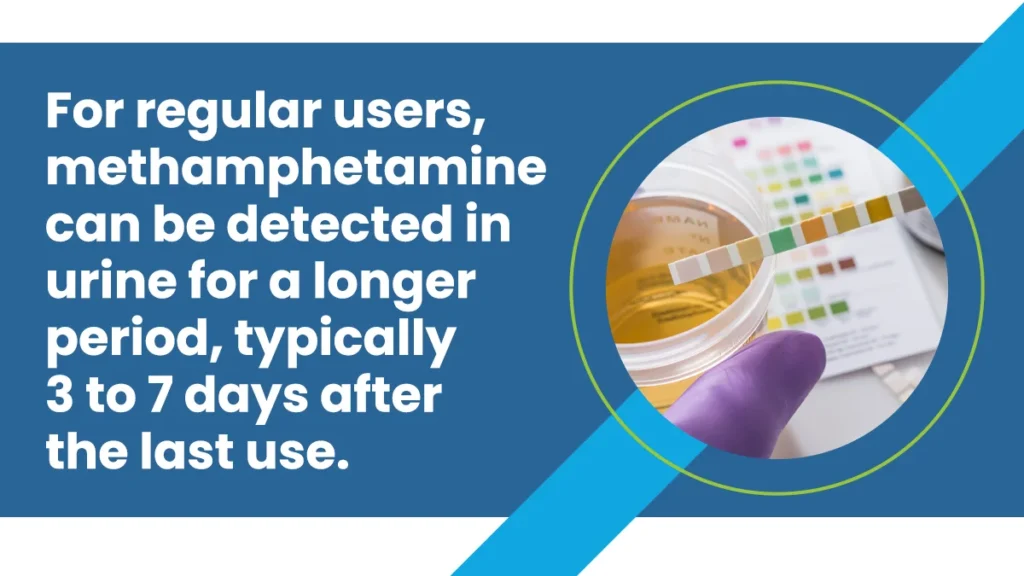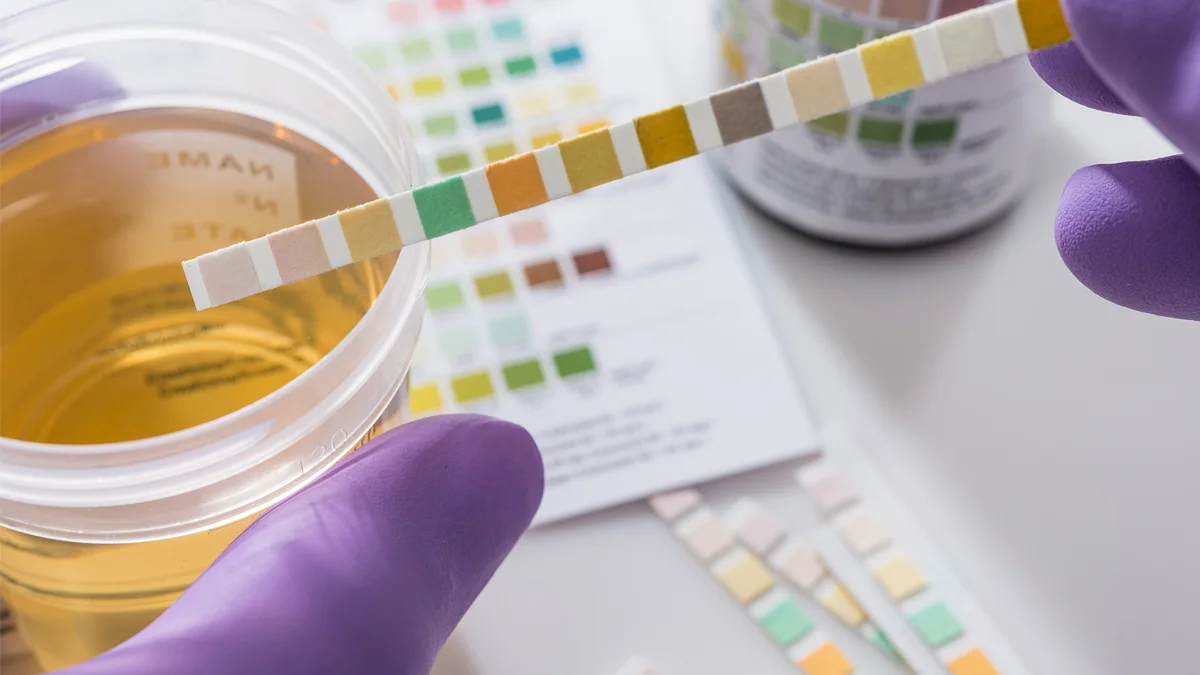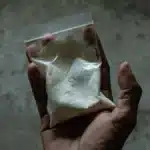Methamphetamines typically stay detectable in urine for a relatively extended period compared to some other drugs. After ingestion, methamphetamine is quickly metabolized by the body, with its primary metabolite, amphetamine, also being detectable in urine drug tests.
Despite its short detection window in urine, meth abuse poses substantial risk effects to both physical and mental health. Read on to explore the importance of prevention, treatment, and support services for people struggling with meth addiction.
Key Takeaways
Methamphetamine use can lead to several physical and mental health risks, necessitating timely prevention and treatment. Here’s what this article covers:
- Methamphetamines have a prolonged detection time in urine compared to some other substances.
- Factors such as frequency of use and metabolism influence the duration of meth detection in urine.
- Natural detox and medical detox methods can aid in eliminating methamphetamine from the body.
Commence your path to meth addiction recovery with one of the best rehab centers in the United States, The Haven Detox-Little Rock. Dial (501) 271-3342 today.

Introduction To Methamphetamines
Methamphetamines, commonly known as meth or crystal meth, are highly stimulant drugs that affect the central nervous system. Meth belongs to the amphetamine class of psychoactive substances and is a highly addictive drug. Meth is typically found in the form of a white, odorless crystalline powder. It can be ingested orally, snorted, smoked, or injected.
Historically, methamphetamine was prescribed for medical purposes such as the treatment of obesity, attention deficit hyperactivity disorder (ADHD), and narcolepsy. However, due to its high potential for drug abuse and addiction, its medical use is now limited.
Chronic abuse can cause long-term damage to the brain, resulting in memory loss or cognitive impairment. Additionally, the production and distribution of meth contribute to various social and environmental problems, including crime and the destruction of communities affected by drug addiction.
How Long Meth Can Be Detected In Urine Test?
Methamphetamine, commonly known as meth, can be detected in a urine test for a varying duration depending on several factors. Typically, meth stays in the urine for:
Occasional Meth Users
For occasional users, methamphetamine can usually be detected in urine for up to 1-4 days after last use. The length of time can differ depending on various factors such as metabolism, hydration levels, and dosage. Occasional users who use meth infrequently or in small amounts often have shorter detection windows compared to regular users.
Regular Meth Users
On the other hand, for regular users, methamphetamine can be detected in urine for a longer period, typically ranging from 3 to 7 days after the last use. Regular use of meth leads to the accumulation of the drug and its metabolites in the body, resulting in an extended detection window. Additionally, factors such as the duration and intensity of meth use can also impact the detection time in regular users.
Remember, these are general guidelines, and individual results can vary. For more precise information, it’s recommended that you consult medical professionals or drug testing experts.
Factors Affecting Detection Time For Meth
When it comes to detecting meth use, several factors come into play, influencing how long the drug remains detectable in the body. Here’s an overview of each:
Dosage And Frequency Of Use
The amount of methamphetamine consumed and how often it’s used directly impacts detection time. Higher doses and frequent drug use result in higher levels of the drug accumulating in the body, extending the detection window.
Metabolism Rate
Metabolism significantly affects the speed at which the body metabolizes and clears methamphetamine from the system. Individuals with faster metabolism rates typically clear the drug from their system more rapidly, shortening the detection window compared to those with slower metabolisms.
Age And Health Factors
Age and overall health status can control the body’s ability to metabolize and excrete methamphetamine. Younger individuals and those in better health often process drugs more efficiently, leading to shorter detection periods. Conversely, older individuals or those with underlying health issues may experience prolonged detection times due to reduced metabolic rate.
Hydration Levels
Hydration levels affect the rate at which methamphetamine and its metabolites are excreted through urine. Adequate hydration facilitates faster elimination of the drug, potentially shortening detection windows. On the other hand, dehydration can slow down the excretion process, leading to longer detection times.
Ultimately, recognizing the intricate interplay of these factors is vital for knowing the complexities of methamphetamine detection.
Comparing Urine Detection With Other Methods
There are different types of drug tests. Each testing method offers different benefits that cater to specific needs. Here’s a comparison of urine tests with different tests:
Urine Vs. Blood Tests
Urine tests and blood tests are both used to detect various substances and conditions, but they differ significantly. Urine tests are non-invasive, easy to administer, and often used for routine screenings and drug tests. Blood tests, while more invasive and requiring a needle, provide more precise and comprehensive information about an individual’s health.
This information includes glucose levels, cholesterol, and the presence of infections or diseases. Blood tests offer immediate insights, whereas urine tests reflect metabolic activities over a longer period.
Urine Vs. Saliva Tests
Urine tests and saliva tests are common methods for detecting drugs and other substances. Urine tests are common detection methods due to their ability to detect a number of substances over a longer period, often up to several days.
Saliva tests, however, are less invasive and can be administered quickly and easily without the necessity for privacy. They are useful for detecting recent substance use, typically within the past 24-48 hours, making them suitable for immediate testing scenarios.
Urine Vs. Hair Tests
Urine and hair tests serve different purposes in substance detection. Urine tests are favored for their quick results and ability to detect recent methamphetamine use, usually within the past few days. Hair tests, on the other hand, provide a much longer detection window, often up to 90 days.
Their long detection time makes them ideal for identifying long-term substance use disorders (SUD). Hair tests require a small sample of hair follicles, which can be more challenging to collect and process than urine samples.
By recognizing the strengths and weaknesses of urine, blood, saliva, and hair tests, one can make informed decisions about substance abuse monitoring.
False Positives And False Negatives
In drug testing, false positives and false negatives are significant concerns. It is important for drug testing methodologies to minimize these errors to ensure accurate results. Here’s the detail:
Common Causes Of False Positives
False positives in drug testing for methamphetamine can occur due to several factors. Some medications, like certain antidepressants and antihistamines, contain chemical structures similar to meth, which can trigger a positive result.
Over-the-counter drugs such as pseudoephedrine, found in cold medications, are common culprits. Cross-reactivity with other substances and improper testing procedures can also lead to false positives, necessitating confirmatory testing to ensure accuracy.
Avoiding False Negatives
Following proper testing protocols is vital to avoiding false negatives in methamphetamine testing. It includes using high-quality testing kits, adhering to recommended procedures, and ensuring samples are not tampered with or adulterated.
Proper sample handling and storage are essential to maintaining sample integrity. Additionally, ensuring that the testing environment is controlled and contamination-free helps obtain accurate results. Regular training for personnel conducting the tests can further minimize the chances of a false negative drug test.
Remember, proper testing procedures, confirmatory testing, and ongoing education for testing personnel are key to minimizing errors.
Clearing Your System Of Methamphetamines
Detoxifying from drugs involves both natural and medical methods to help individuals overcome addiction and restore health. Below are some strategies for detoxification:
Natural Detox Methods
Natural detox methods focus on aiding the body in eliminating methamphetamines through lifestyle changes and supportive practices. These include staying hydrated, consuming a nutrient-rich diet, engaging in regular physical exercise, and getting ample rest. In addition, certain supplements and herbal remedies may support the detox process by enhancing liver function and promoting overall well-being.
Medical Detox Methods
Medical detox involves medical supervision and the use of medicines to handle meth withdrawal symptoms and ensure safety. Treatment options may include inpatient drug rehab or outpatient treatment programs where healthcare providers offer medical and psychological support.
These programs often incorporate behavioral therapies, counseling, and support groups to identify the common causes of addiction and facilitate long-term recovery.
Combining these approaches yields the best results, promoting physical and mental health while supporting individuals on their journey to sobriety.
Frequently Asked Questions (FAQs)
How long can methamphetamines be detected in urine after use?
Methamphetamine can typically be detected in urine for up to three to five days after use. However, this window can vary depending on factors such as the individual metabolism, frequency of use, and the sensitivity of the testing method. In chronic users, detection might extend to seven days or longer.
Factors like hydration levels and kidney function can also influence the detection period. It’s important to note that while urine tests are commonly used for detecting recent methamphetamine use, other methods like hair follicle tests or blood tests may detect the drug for long periods.
Are there ways to expedite the removal of methamphetamines from the body?
To expedite the removal of methamphetamines from the body, staying hydrated is crucial. Drinking plenty of water helps eliminate toxins through urine. Additionally, regular exercise can speed up metabolism, eliminating drugs from the person’s system.
A balanced fruits, vegetables, and fiber diet can also support detoxification. Moreover, adequate rest allows the body to repair and regenerate, facilitating the removal of toxins. Lastly, it is advisable to consult a healthcare professional for guidance on detox methods tailored to individual needs for a safe and effective process.
Transform Your Future: The Haven Detox-Little Rock
At The Haven Detox-Little Rock, we’re dedicated to aiding individuals and their loved ones battling with meth addiction.
Our detox program is designed to provide comprehensive support for individuals seeking to overcome addiction. The residential program offers a supportive environment where individuals can focus on their recovery journey.
Additionally, our IV therapy services aim to deliver important nutrients directly into the bloodstream, promoting optimal physical health.
Contact us now at (501) 271-3342 to access our professional help and support.




